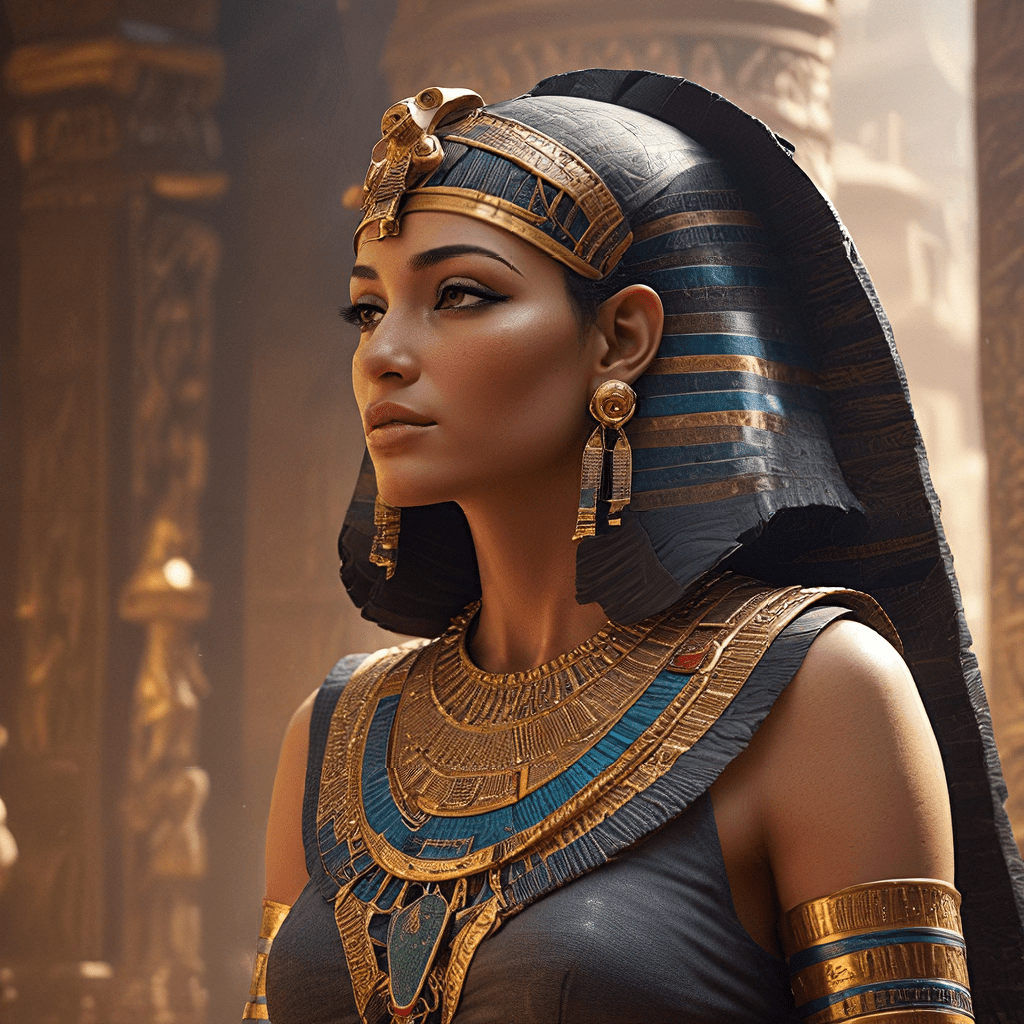The Afterlife Magic: Exploring the Magical Practices of Ancient Egyptians
Ancient Egyptians held a deep belief in the afterlife and its importance. They believed that death was not the end but a transition to a new realm where the soul continued its journey. The concept of “Ma’at,” representing cosmic order and balance, played a crucial role in their beliefs. It was believed that by living a righteous life and adhering to the principles of Ma’at, individuals could ensure a favorable outcome in the afterlife.
After death, the soul embarked on a perilous journey through the underworld, encountering various challenges and divine figures. The Book of the Dead, a collection of magical spells and instructions, served as a guide for navigating this journey. It offered spells to protect the soul from dangers, appease divine judges, and ensure a successful transition into the afterlife.
The Role of Magic in the Afterlife
Magic was an integral part of ancient Egyptian life, and it played a significant role in ensuring a successful afterlife. It was believed that magical practices could help individuals overcome the challenges of the underworld, protect them from dangers, and enhance their soul’s journey. Spells, incantations, and magical objects were used to navigate the afterlife, ensure a favorable judgment, and attain eternal life.
Ancient Egyptians believed that magic could be used to ward off evil spirits, overcome obstacles, and gain the favor of gods. Magical formulas, charms, and amulets were inscribed on papyrus, tomb walls, and even mummies themselves, providing protection and guidance in the afterlife.
Amulets and Talismans: Magical Objects for the Afterlife
Amulets and talismans were believed to have powerful magical properties and were essential in the afterlife. These small objects, often made of precious metals, stones, or faience, were inscribed with symbols, deities, or protective spells. They were worn by the living and buried with the deceased to provide protection, enhance the soul’s journey, and ensure a successful transition.
Some popular afterlife amulets included the scarab beetle, representing rebirth and resurrection; the Eye of Horus, symbolizing protection and healing; and the ankh, representing life and eternal existence. These amulets were believed to grant the wearer divine favor and protection in the afterlife.
Funerary Rituals and Spells
Funerary rituals were crucial in preparing the deceased for the afterlife. Mummification was a complex process, believed to be essential for preserving the body and allowing the soul to reunite with it in the afterlife. This process was often accompanied by magical spells for preservation and protection. The embalmers used specific spells to purify the body, protect it from decay, and ensure its survival in the afterlife.
Priests and shamans played a vital role in funerary rituals, reciting spells and incantations to guide the soul through the afterlife. They conducted ceremonies, offered prayers, and performed rituals to ensure a smooth transition and a successful judgment before the divine judges.
The Power of Words and Incantations
Words and incantations held immense power in ancient Egyptian magic. Spells and incantations were believed to have the ability to influence the supernatural world, protect the deceased, and guide their soul through the afterlife. They were carefully crafted using specific language and symbolism to achieve specific magical effects.
These spells were often written on papyrus scrolls, amulets, or tomb walls, providing guidance and protection to the deceased. The Book of the Dead itself is a testament to the power of words in influencing the afterlife, offering spells for navigating the underworld, overcoming trials, and achieving eternal life.
The Significance of Offerings and Sacred Objects
Offerings played a crucial role in ancient Egyptian funerary practices. Food, drink, and other objects were placed in tombs to provide sustenance for the deceased in the afterlife. These offerings were imbued with symbolic meaning, representing essential elements for a comfortable and fulfilling existence in the otherworldly realm.
Sacred objects, such as statues, amulets, and weapons, were also placed in tombs for their magical properties. They provided protection, enhanced the soul’s journey, and symbolized the deceased’s status and achievements in this life. These objects served as tangible reminders of their past lives, offering the deceased comfort and familiarity in the afterlife.
The Role of Deities and Spirits
Gods and goddesses played a pivotal role in the Egyptian afterlife. They were believed to judge the deceased, guide their souls, and protect them from dangers. Some key deities associated with the afterlife include Osiris, the lord of the underworld, Anubis, the god of mummification, and Thoth, the god of wisdom and magic.
Spirits, both benevolent and malevolent, also inhabited the underworld. Magical practices were used to appease or communicate with these spirits, seeking their guidance or protection. The deceased often appealed to these supernatural beings for assistance in their journey to the afterlife.
The Magic of the Pyramids and Tombs
The pyramids and tombs of ancient Egypt were not just burial structures but were also infused with magic. They were carefully designed and constructed using specific architectural features and orientations, believed to enhance the deceased’s journey to the afterlife and provide them with protection.
These structures were adorned with elaborate decorations, hieroglyphic inscriptions, and magical spells, intended to guide the soul, protect it from harm, and ensure its safe passage into the afterlife. The pyramids and tombs themselves served as powerful symbols of the deceased’s power, wealth, and connection to the divine realm.




